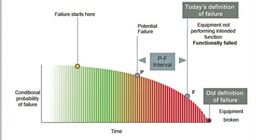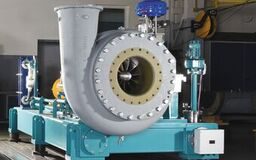North America’s First Tree-Free Pulp Mill
GRAEME RODDEN
It is not a new concept—pulp made from non-wood fiber—and it has been discussed for years, but not until now has it again become a reality in North America. Columbia Pulp (Dayton, WA) is about to start up the first North American greenfield pulp mill in quite some time. The revolutionary aspect is that agricultural waste—wheat straw—will be the furnish.
Company CEO John Begley says that wheat straw was a prevalent fiber source in the US Midwest until the 1960s when environmental regulations made it non-feasible. Speaking at the 2018 RISI North American Forest Products Outlook Conference in San Francisco, Begley noted that non-wood fiber had a poor reputation when it came to pulp: weak characteristics and a “dirty” production process.
The renaissance of using wheat straw goes back about 20 years. The area around the Columbia Pulp mill is one of the highest density wheat growing regions in the US. One of the biggest issues for growers was the disposal of the wheat straw.
The annual burning of this agricultural residue following the harvest was creating huge pollution and potential health problems in eastern Washington (45,000 tons/yr of atmospheric emissions). Every year, four to five million acres were being burned. It got to the point where the state imposed a levy on farmers. The money from the levy paid for studies looking at possible methods to commercialize the wheat straw after harvesting.

The issue ended up at the University of Washington pulp and paper school, where Bill McKean and Mark Lewis took it on and developed a process to pulp the straw. Begley says that after a “false start” about seven years ago, the team developed proprietary technology now called the Phoenix Process.
This led to the establishment of Sustainable Fiber Technologies (SFT), of which Lewis is CEO. Laboratory–scale runs showed the viability of the project. “They then contacted me and asked if I could bring it to the commercial stage,” Begley explains. This led to the establishment of Columbia Pulp. “It has taken about five years to get to this stage.
“We bought the license for the Phoenix Process from SFT,” Begley adds. At the pilot stage, Central National-Gottesman (CNG) was brought in to enhance market awareness and customer satisfaction.
FROM PILOT TO COMMERCIAL
The pilot plant was started in September 2018 and papermakers have shown a lot of interest, according to Begley. “There is growing awareness in the papermaking world for the environmental benefits of it as well as the question of sustainability. We will do a life cycle analysis of the product and we expect it to have a significant competitive advantage.”
Columbia Pulp is owned by about 20 individuals and one private equity firm, Columbia Ventures (Vancouver, WA), whose majority owner is Ken Peterson. With firm financing commitments, a technically feasible process, and interested customers, ground was broken for the mill in August, 2017. Startup was scheduled for early 2019. Total cost is estimated at US$200 million.
As noted, the furnish is wheat straw, although Begley explains that a small portion (about 10 percent) of seed alfalfa is also used. The area north of Walla Walla, WA, in the eastern part of the state, grows all the seed alfalfa needed in the US. A chemical is used to germinate the seed so the alfalfa residue could not be sold and it also was being burned. Across North America, Begley notes that, on an annual basis, there is 10 times as much biomass available from farm residuals as there is wood.
Columbia Pulp has contracts with about 10 companies that bale the wheat straw for the region’s farmers as well as agreements with a few individual farmers. Most of the contracts are for three years.
At capacity, the mill will use 600 tpd (240,000 tpy) of raw material to produce 400 tpd of pulp and 200 tpd of biopolymers. The straw is 67 percent cellulose and 33 percent lignin and carbohydrate.
The shelf life of agricultural residue has been questioned. Begley says that wheat straw does pass the test of time, as it were. “It is good for more than a year,” he adds. “We have some from 2016 that is showing some degradation. The 2017 stock is still in good shape.”
Columbia Pulp will collect the wheat straw within a 100-mi radius of the mill. Within that area, about four million tons of wheat is grown, so availability of raw material is not an issue. The wheat straw is baled; each weighs 1,000 lb. Columbia Pulp will buy about US$13 million of straw annually.
Columbia Pulp has five sites set aside for exterior storage. Begley adds that the region is one of exceptionally low rainfall: about 9 inches (22 cm) of moisture annually.
Although proprietary, Begley describes some of the process. It is a sulfur-free chemical process that needs no pressurized or high-temperature vessels. It uses 25 percent less water and only 30 percent of the energy compared to a traditional pulp process. It is a closed system so there is no need for effluent treatment. Therefore, there are economical as well as environmental advantages.
Begley says the wheat straw is put into a large vat where water and chemicals are added. “When dealing with straw,” he explains, “it is a weaker fiber than wood, so you need to be careful how you process it. It needs to be a milder, gentler process.”

After the pulp leaves the retention tank, it goes through what Begley says is a conventional pulping process (refining, pressing, washing) and into a wet lap machine. There is no bleaching. Moisture content of the wet lap bales will be 50 percent.
Columbia Pulp is using a lot of used equipment for the process. It has also worked with Andritz on the refiners. “The rest is just pumps and tanks,” Begley says, “without the recovery boiler.”
The engineering service provider was Allnorth Americas, which supplied multi-discipline engineering and design services. Allnorth started working with Columbia Pulp in early 2015 and supported them by providing process engineering through the project development phase. When the project received final approval in 2017, Allnorth was responsible for engineering and design of the mill, including fiber handling, pulping, co-product evaporation, wet lap and finished products warehouse, truck and rail loading, chemical storage and handling, and utilities. In addition to design engineering services, Allnorth also provided procurement support, field engineering, and commissioning and startup support. Other suppliers included PCI (general contractor) and Landau & Associates (environmental).
PAST QUESTIONS ABOUT
NON-WOOD NOT AN ISSUE
Asked about the challenges of pulping a non-wood fiber, Begley explains: “Because you don’t really cook it, the silica stays in the process. The biggest challenge is the annual nature of the harvest and resulting material handling and storage.”
Begley says Columbia’s pulp will be similar to hardwood pulp. Fiber length is about equal and it is brighter. “It has a golden hue, like the straw itself,” he adds. “We are looking at being a hardwood substitute and it is cleaner than people think.”
The main end uses targeted are tissue (most types) and molded products. Packaging is another possibility, says Begley, as are specific grades such as label backing.
In terms of how it can be used, Begley adds that for molded products, wheat straw pulp could be the entire furnish. “Every paper grade is usually a recipe,” he explains. “So, it will all be up to the papermaker. A tissue/towel with 50 to 60 percent hardwood pulp could be a goal. Our pulp won’t replace softwood.”
Begley reiterates that the Columbia pulp will complement, rather than compete with, traditional wood pulps.
“Our plan is to have one grade,” Begley continues. “However, some end uses require certain parameters—for example, molded products want lower freeness. But, for the most part, we will target the same pulp product.”
Another benefit is that the waste stream (200 tpd) also has revenue potential. The biopolymers can be used in deicing, erosion control, dust suppression, and agro-chemical applications.
As it is wet lap, shipping distances are limited. Still, Begley says the issue is not physical, but economics. “We could get to the East Coast, but the objective is to keep it as close as possible to the mill to minimize freight.”
At the beginning, Columbia Pulp is targeting the US Northwest as its potential market. Begley says there are five million tons of paper being made within 350 miles of the mill. The pulp will be shipped by truck, the biopolymers by rail. As well as being close to the highway system, the mill is right near the main Union Pacific rail line.
NO EFFLueNT TREATMENT
As noted, the process is closed so there is no need for an effluent treatment system. The mill uses fresh water from wells. Water is recycled back into the process or goes out in the product.
For power, the mill sits right on the Trans-Canada pipeline that carries natural gas into the US.
“We tap into that and co-generate electricity and steam for the mill,” Begley explains. “We only generate enough electricity for mill use. We have a back-up electrical line as well.”
At capacity, the mill will employ about 100 people. Key managers and superintendents were hired first. Staff will all work at the pilot center first to get an understanding of the process and product. The first hires were a mix—some with pulp and paper experience, some without.
“Walla Walla College had a pulp and paper program they put together for Packaging Corporation of America in Wallula, WA,” Begley says. “We were able to tack onto that.”
The positive effect Columbia Pulp will have on the local economy, which is mainly agriculturally-based, cannot be underestimated. Begley estimates the mill will be worth US$70 million annually to the region. “We want to be the signature employer in the area.”
The mill has generated “tremendous support” from the community, he adds. “The environmental story will give people the incentive and it is up to us to prove that it works.”
Begley says that there has been a lot of interest from potential end users, especially about the fact they will soon be able to source non-wood pulp from the US. “This product fills a niche that is now being filled by imported products.”
There is another hurdle Begley believes Columbia Pulp can successfully jump. “The industry needs to get over the history of non-wood fiber not being of good quality.”
The strong environmental aspect is just the cherry on top of the cake.
Graeme Rodden is senior editor, North and South America, Paper360°. He can be reached at: [email protected].




